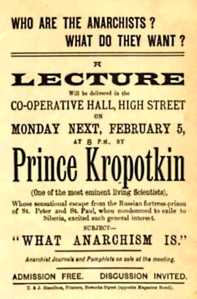 Variety, as we all know, is the spice of life. It’s also the spice of education – as many studies have shown, few tactics awaken student attention as much as shaking things up, at least proverbially, in your classroom. To help plan your lessons in the new semester, we are gathering a (by no means exhaustive) taxonomy of lecture types – old and new ways for awakening your students’ interest and guiding them toward deeper understandings of the course material. (Much of the following has been inspired by Peter J. Frederick’s “The Lively Lecture,” College Teaching, Vol. 34, No 2 [1986]).
Variety, as we all know, is the spice of life. It’s also the spice of education – as many studies have shown, few tactics awaken student attention as much as shaking things up, at least proverbially, in your classroom. To help plan your lessons in the new semester, we are gathering a (by no means exhaustive) taxonomy of lecture types – old and new ways for awakening your students’ interest and guiding them toward deeper understandings of the course material. (Much of the following has been inspired by Peter J. Frederick’s “The Lively Lecture,” College Teaching, Vol. 34, No 2 [1986]).
- Old School Perfection: In 1837, Ralph Waldo Emerson lauded a lecture-based education which, he said, aimed “not to drill, but to… set the hearts of youth on flame.” There’s a lot to be said for a well-designed lecture: It can effectively summarize vast expanses of knowledge. It can provide students with the most up-to-date data and perspectives in the discipline. It can translate potentially abstruse concepts into readily digestible thought. A well-designed lecture can be like educational lightning – it can excite hearts and illuminate minds. Nevertheless, even the most passionately burning heart is still a passive recipient of flames, at least in this context. It’s not our position that old school lectures are a bad form of education – they certainly have their place. What I’d urge against, however, is exclusive reliance upon them.
- Students as Lecture Participants: Brainstorming. In this type of lecture, the students generate the ideas that form the intellectual structure of the lesson “Tell me everything you know about particles & waves!” you might call out to your students, or “What comes to mind when I say ‘The Soviet Union’?” What then unfolds is often a jumble of discrete facts, broad opinions, and sometimes very detailed analysis. The teacher writes the student responses on the blackboard – all the ideas. Some teachers arrange the student responses in broad categories (but let students know what those categories are beforehand). Even better – have the students categorize their responses. They have actively created the signposts for their learning, and the teacher can help them connect, synthesize and analyze the matters at hand.
- Suspense, Riddles, Enigmas: This kind of lecture centers around a mystery or unanswered question that the teacher poses at the beginning of the lesson. What it takes to solve the puzzle naturally varies according to the field – a model, a proof, an understanding of the poet’s life or of photosynthesis. While the teacher might take on the role of detective, often the best examples of these types of lessons bring students into the investigation. “How do you think the government would react?” “What could the shape of that bone suggest?” Remember that, even if your students don’t “know” the factual material in question, they can still make rational deductions if you frame questions in ways that allows them to do so.
Each of these has a place in one’s toolbox of classroom strategies and by no means should we consider them to be mutually exclusive. In the second part, we will explore some more creative ways of structuring lectures.
This post was written by Stephen A. Walsh.